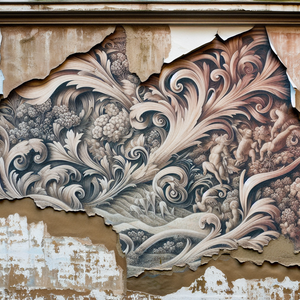The Evolution of the Apple Store Experience

When the first Apple Store opened in Tysons Corner, Virginia, the design was groundbreaking. The open layout, minimalist aesthetic, and focus on experience over mere product display were revolutionary. Unlike traditional electronics retailers that were cluttered and overwhelming, the Apple Store invited customers to explore products in a spacious, well-lit environment. The signature glass staircase and the use of natural materials like wood created a welcoming ambiance that encouraged exploration. The design philosophy emphasized transparency and accessibility, with products displayed openly on tables, allowing customers to interact without the pressure of sales personnel. This approach not only showcased Apple products effectively but also fostered a sense of community among users. The layout encouraged hands-on experiences, where customers could test devices such as iPhones and MacBooks freely, cultivating a deeper understanding and appreciation of the products.
Customer Engagement Strategies
As the Apple Store experience matured, so did its customer engagement strategies. The introduction of the “Genius Bar” in 2001 was a significant turning point. This dedicated space for customer support and technical assistance positioned Apple as not just a product manufacturer but a service-oriented brand that cared about its customers post-purchase. The Genius Bar became synonymous with excellent customer service, turning often stressful tech support experiences into memorable, positive interactions. For example, customers could walk in with their devices, receive personalized assistance from knowledgeable staff, and leave with their issues resolved, enhancing brand loyalty. This service-oriented approach set a new standard for customer support in retail, prompting competitors to reevaluate their own service offerings. Furthermore, Apple Stores embraced community engagement through workshops and events. These sessions, ranging from basic software training to creative classes, not only educated customers but also fostered a deeper connection to the brand. By nurturing a community of users and creators, Apple Stores transformed into hubs of inspiration and learning. The “Today at Apple” program, which offers free classes and sessions, exemplifies this commitment to community engagement, allowing customers to explore new skills and deepen their connection to the Apple ecosystem.
Trendy Retail Innovations
Apple Stores have also set trends in retail design that have been adopted by various industries. The implementation of augmented reality (AR) and interactive displays has kept the shopping experience fresh and engaging. For instance, the recent incorporation of AR in product demonstrations allows customers to visualize how a product would fit into their lives, enhancing their decision-making process. This integration of technology into the shopping experience not only elevates customer interaction but also positions Apple as a leader in retail innovation. Moreover, the concept of “town square” stores—larger locations that serve as community centers—has become a hallmark of Apple’s retail strategy. These stores feature spaces for events, discussions, and even performances, positioning them as integral parts of the community rather than just retail outlets. For example, the Apple Store at the Union Square in San Francisco has hosted live performances and community discussions, further reinforcing its role as a cultural hub. This approach has helped Apple to remain relevant in an increasingly digital shopping environment, where physical interaction still plays a crucial role.
Impact on the Retail Landscape
The evolution of the Apple Store has had a profound impact on the retail landscape. Competitors have looked to Apple for inspiration, adopting similar design principles, customer service approaches, and community engagement strategies. The focus on creating an immersive experience has become a central tenet in modern retail, pushing brands to redefine their physical spaces to align with consumer expectations. The pandemic accelerated many retail trends, and Apple responded by enhancing online services while maintaining the in-store experience. Initiatives like curbside pickup and virtual appointments exemplified Apple’s adaptability, ensuring that the customer experience remained seamless, whether online or in person. By leveraging technology to bridge the gap between online and offline shopping, Apple has set a model for how retailers can navigate changing consumer behaviors.
The Apple Store experience has evolved dramatically since its inception, reflecting broader trends in technology, consumer behavior, and retail design. From its initial concept as a minimalist space for product exploration to its current status as a community hub and trendsetter in retail innovation, Apple has consistently prioritized customer experience and engagement. As digital shopping continues to grow, the Apple Store remains a powerful example of how physical retail can adapt, innovate, and thrive in a changing landscape. Through its commitment to creating meaningful experiences, Apple not only sells products but also fosters a loyal community of users, ensuring its place at the forefront of the retail revolution. The Apple Store experience exemplifies how thoughtful design and customer engagement can redefine retail, making it relevant and impactful in today’s fast-paced world.
Retail Experience Designer
Retail design firms, large consumer electronics brands (like Apple, Samsung), and global retail chains.
Core Responsibilities
Develop innovative retail concepts that enhance customer engagement and interaction within physical store environments.
Collaborate with cross-functional teams, including marketing and product development, to ensure brand consistency across all touchpoints.
Analyze customer behavior and feedback to continuously improve store layouts and visual merchandising strategies.
Required Skills
Proficiency in design software (e.g., Sketch, Adobe Creative Suite) and an understanding of 3D modeling tools.
Strong understanding of customer journey mapping and retail psychology.
Experience in creating immersive and interactive environments that align with brand identity.
Customer Experience Manager
Retail companies, hospitality businesses, and service-oriented brands.
Core Responsibilities
Lead initiatives to enhance customer service strategies, ensuring a seamless experience across both in-store and online platforms.
Train and develop staff on customer engagement techniques and brand values to reflect the company’s service-oriented mission.
Monitor and analyze customer satisfaction metrics, implementing improvements based on feedback and data analysis.
Required Skills
Excellent communication and interpersonal skills, with a focus on building relationships.
Experience with customer relationship management (CRM) software and data analysis tools.
Strong problem-solving abilities and creativity in developing customer engagement programs.
Augmented Reality (AR) Product Manager
Tech companies, retail brands, and AR startups.
Core Responsibilities
Oversee the development and implementation of AR features within retail applications, enhancing customer interaction with products.
Collaborate with engineering and design teams to create user-friendly AR experiences that align with marketing goals.
Conduct market research to identify emerging trends in AR technology and consumer preferences.
Required Skills
Strong background in product management and experience with AR technologies (e.g., ARKit, Vuforia).
Ability to translate complex technical concepts into actionable business strategies.
Familiarity with UX/UI principles and user testing methodologies.
Community Engagement Coordinator
Retail brands, nonprofits, and community organizations.
Core Responsibilities
Plan and execute community events and workshops that foster customer loyalty and enhance brand visibility.
Collaborate with local organizations to strengthen community ties and encourage participation in store events.
Measure the impact of community initiatives through surveys and feedback, adjusting strategies accordingly.
Required Skills
Strong event planning and project management skills, with the ability to multitask and prioritize effectively.
Excellent communication and networking abilities to build relationships with community members and local organizations.
Experience in social media management and digital marketing to promote events and initiatives.
Visual Merchandising Specialist
Retail chains, fashion brands, and consumer electronics companies.
Core Responsibilities
Design and implement visually appealing product displays that enhance the customer shopping experience and drive sales.
Work closely with marketing and sales teams to ensure alignment with promotional strategies and seasonal campaigns.
Conduct regular assessments of store layouts and merchandising effectiveness, making adjustments as needed.
Required Skills
Strong aesthetic sense with a keen eye for detail and design principles.
Proficiency in visual merchandising software and tools to create layout plans.
Ability to analyze sales data to determine the effectiveness of visual merchandising strategies.


